Vocabulary enhancement Normal Elementary Phonics Worksheets for Ages 3-9
6 filtered results
-
From - To
Discover our engaging Vocabulary Enhancement Normal Elementary Phonics Worksheets, expertly designed for children ages 3-9. These interactive resources focus on building foundational vocabulary skills through fun, age-appropriate activities. Our worksheets incorporate phonics learning, fostering a love for reading while enhancing word recognition and comprehension. With a variety of exercises, children can practice letter sounds, match words with images, and engage in playful learning tasks. Perfect for homeschooling, supplementing classroom instruction, or reinforcing vocabulary at home, these worksheets promote early literacy and inspire young learners to expand their vocabulary with confidence. Help your child embark on an exciting educational journey today!
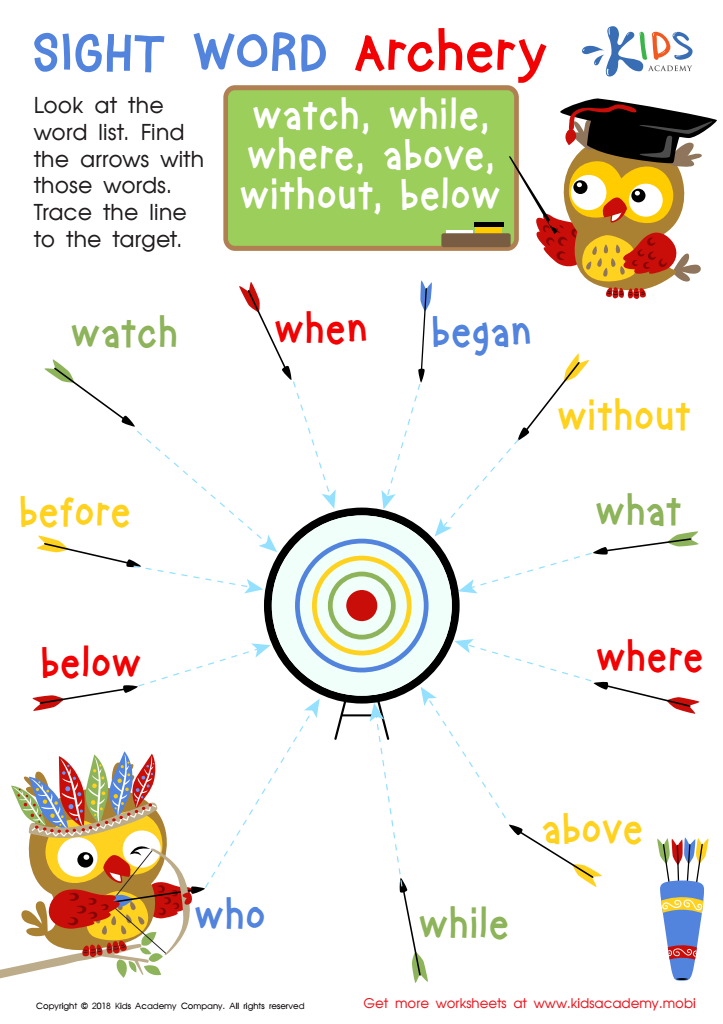

Sight Word Archery Worksheet
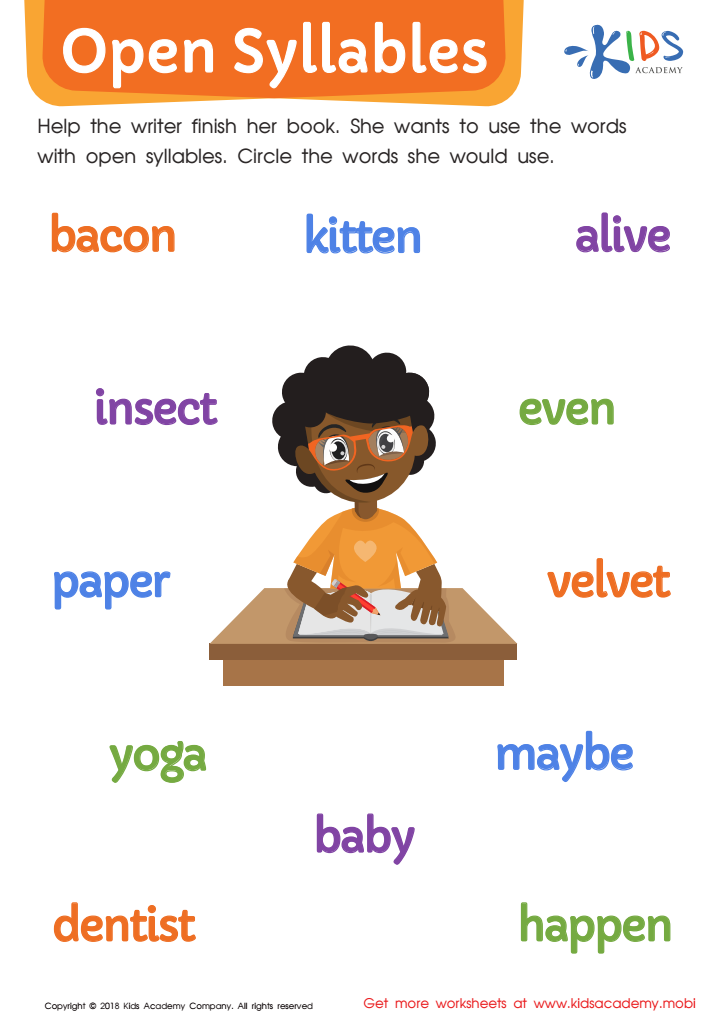

Open Syllables Worksheet


How Many Syllables? Worksheet
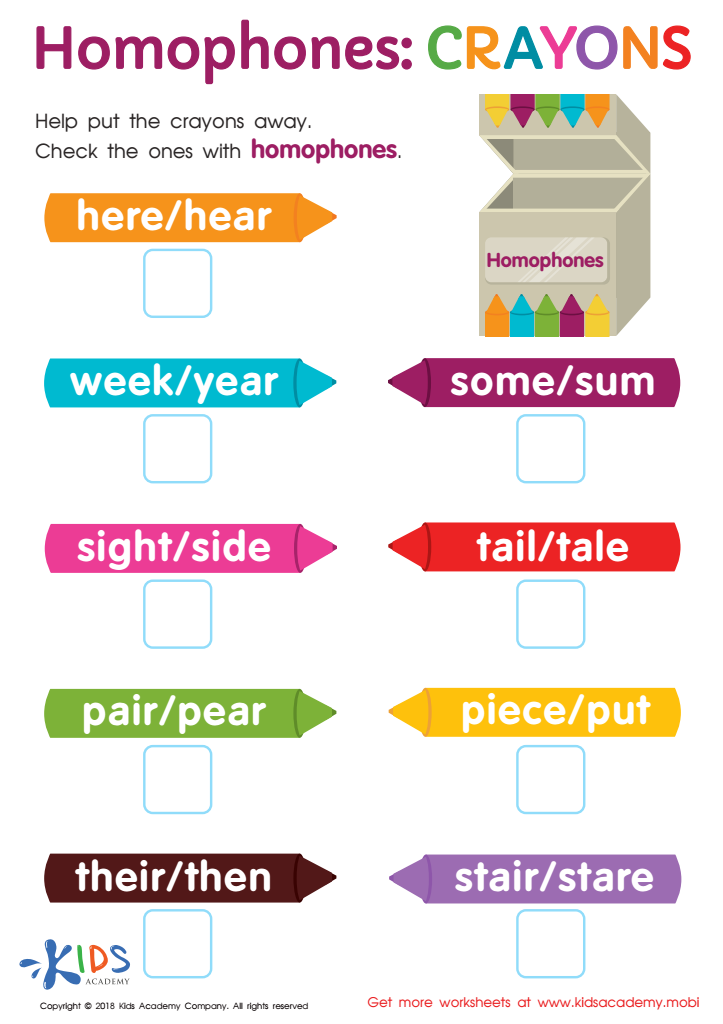

Homophones: Crayons Worksheet
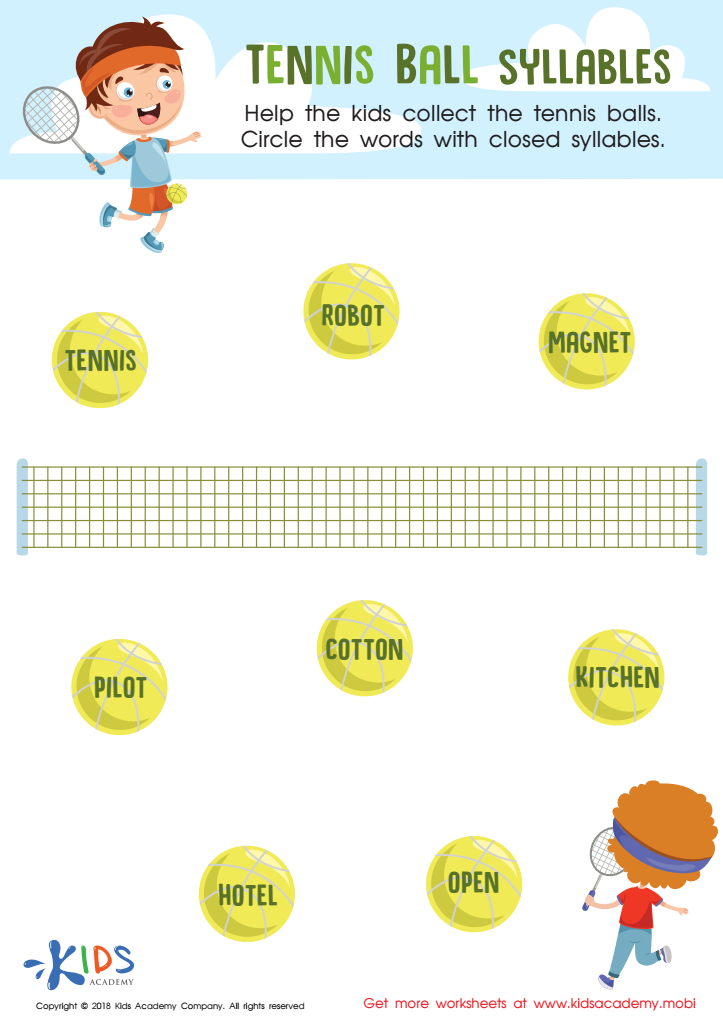

Tennis Ball Syllables Worksheet
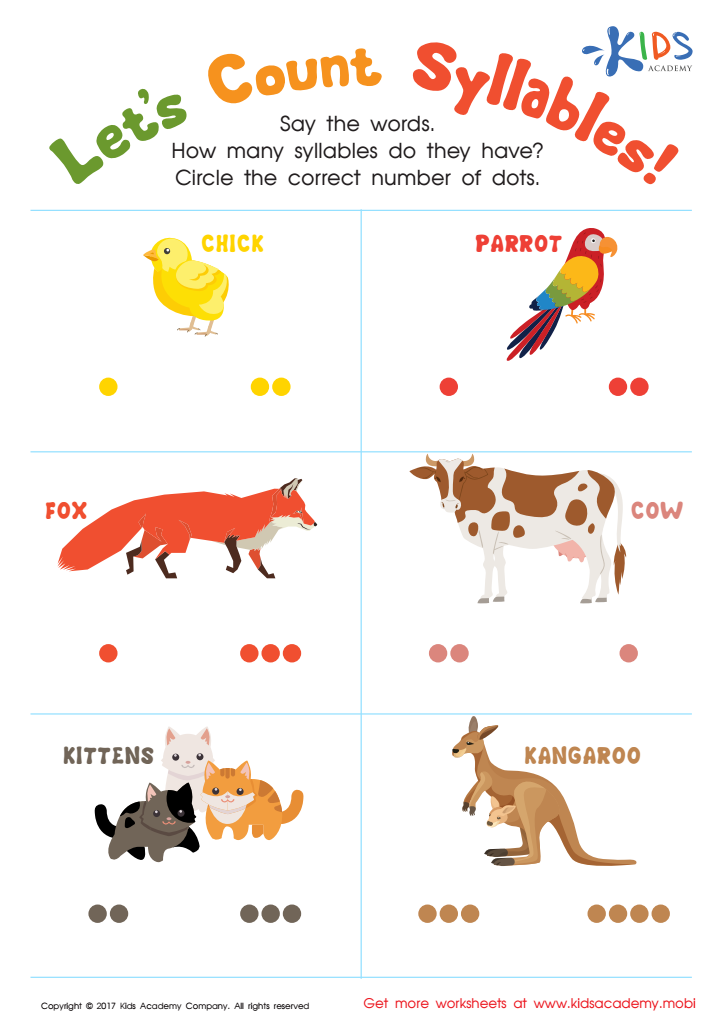

Lets Count Syllables Worksheet
Vocabulary enhancement through Normal Elementary Phonics is crucial for children aged 3-9 as it lays the foundational building blocks for effective communication and literacy skills. Early childhood represents a pivotal stage for language acquisition, and a rich vocabulary significantly influences a child's ability to read, write, and express themselves.
Parents and teachers should prioritize phonics programs because they introduce children to phonemic awareness—the understanding of sounds in spoken words, which is fundamental for decoding words when reading. With a strong phonics foundation, children find it easier to understand new vocabulary, grasp meaning in context, and become more confident readers and writers.
Moreover, enhanced vocabulary supports cognitive development, allowing children to engage in more complex thoughts and ideas. This competence in language fosters critical thinking, facilitates discussions, and improves comprehension across subjects.
Additionally, a robust vocabulary is linked to academic success. Children with a wider range of words are better equipped to understand instructions, summarize information, and perform well on assessments.
Encouraging vocabulary enhancement through phonics proves to be a lasting investment in a child's academic trajectory, promoting not only literacy but also social and emotional learning, paving the way for lifelong skills and achievement.

 Assign to My Students
Assign to My Students
















